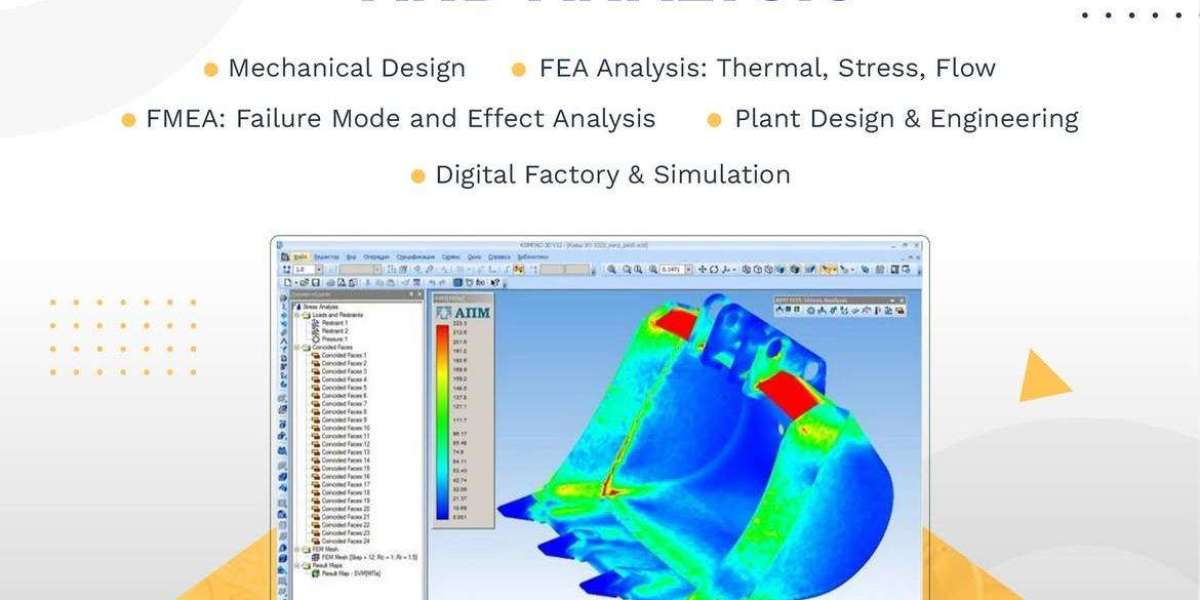In the realm of modern engineering, the fusion of Computer-Aided Design (CAD) and Finite Element Analysis (FEA) has revolutionized the product development landscape. This integration enables engineers to create detailed digital models and rigorously analyze their performance under various conditions, leading to optimized designs and reduced reliance on physical prototypes.
Understanding Computer-Aided Design (CAD)
CAD refers to the use of computer software to create, modify, analyze, and optimize designs. It facilitates the development of precise 2D and 3D models, allowing engineers to visualize components and assemblies before manufacturing. Popular CAD tools include AutoCAD, Inventor, SolidWorks, and Creo. These platforms support 3D solid modeling, geometric dimensioning and tolerancing, and functional validation through animations. Additionally, CAD models can be integrated with FEA software for comprehensive analysis and with controllers for Hardware-in-the-Loop (HIL) testing visualization.
Delving into Finite Element Analysis (FEA)
FEA is a computational technique used to predict how products react to real-world forces, vibration, heat, fluid flow, and other physical effects. By breaking down complex structures into smaller, manageable elements, FEA allows for detailed analysis of stress, strain, and deformation. This method is integral to modern engineering, providing insights that inform design decisions and enhance product reliability.
The Synergy Between CAD and FEA
The integration of CAD and FEA creates a seamless workflow from design to analysis. Engineers can develop a digital model in a CAD environment and directly import it into FEA software for simulation. This synergy offers several advantages
Seamless Data Transfer: Direct importation of CAD models into FEA software ensures accuracy and reduces manual data entry errors.
Iterative Design Process: Engineers can quickly iterate between CAD modifications and FEA analyses, fine-tuning designs to meet performance goals.
Enhanced Accuracy: Utilizing detailed CAD models in FEA simulations improves the precision of analysis results, leading to better-informed design decisions.
The FEA Analysis Process
Conducting an FEA involves three primary stages:
Pre-Processing:
Geometry Definition: Creating the 3D model of the component or system.
Material Properties Assignment: Specifying material characteristics such as elasticity, density, and thermal conductivity.
Loads and Boundary Conditions Application: Defining external forces, pressures, temperatures, and constraints acting on the model.
Discretization and Mesh Generation: Dividing the model into finite elements and generating the mesh, considering element shapes and sizes.
Solution:
Physics and Assumptions: Selecting the type of analysis—structural, thermal, vibration, etc.—and defining relevant assumptions.
Equation Generation and Solving: Constructing and solving the mathematical equations governing the system's behavior.
Post-Processing:
Result Evaluation and Interpretation: Visualizing and analyzing results through contour plots, graphs, and animations to assess performance and identify potential issues.
This structured approach ensures comprehensive analysis and facilitates informed decision-making throughout the design process.
Applications of CAD and FEA Integration
The combined use of CAD and FEA spans various industries and applications:
Automotive Engineering: Designing and analyzing vehicle components for safety, durability, and performance.
Aerospace Engineering: Ensuring structural integrity and optimizing weight in aircraft and spacecraft designs.
Civil Engineering: Assessing the strength and stability of structures like bridges and buildings.
Consumer Products: Enhancing the design of everyday items for improved functionality and user experience.
By leveraging CAD and FEA, engineers can predict and mitigate potential failures, optimize material usage, and innovate more effectively.
Advantages of Integrating CAD with FEA
Integrating CAD with FEA offers numerous benefits:
Reduced Development Time: Early detection of design flaws minimizes the need for extensive prototyping, accelerating the development cycle.
Cost Efficiency: Identifying and addressing issues during the design phase reduces expenses associated with late-stage modifications and recalls.
Improved Product Quality: Comprehensive analysis leads to designs that meet performance criteria and regulatory standards.
Enhanced Collaboration: A unified platform facilitates communication among design, analysis, and manufacturing teams, promoting a cohesive development process.
Challenges and Considerations
While the integration of CAD and FEA presents significant advantages, it also poses certain challenges:
Learning Curve: Proficiency in both CAD and FEA software requires training and experience.
Computational Resources: Complex simulations demand substantial computational power and time.
Model Accuracy: The precision of analysis results depends on the quality of the CAD model and the appropriateness of the FEA setup, including mesh quality and boundary conditions.
Addressing these challenges involves investing in training, utilizing advanced computing resources, and adhering to best practices in modeling and analysis.
Conclusion
The integration of Computer-Aided Design and Finite Element Analysis at servotechinc has become a cornerstone of modern engineering, enabling the development of innovative, reliable, and efficient products. By harnessing the strengths of both methodologies, engineers can navigate the complexities of design and analysis with greater precision and confidence.








